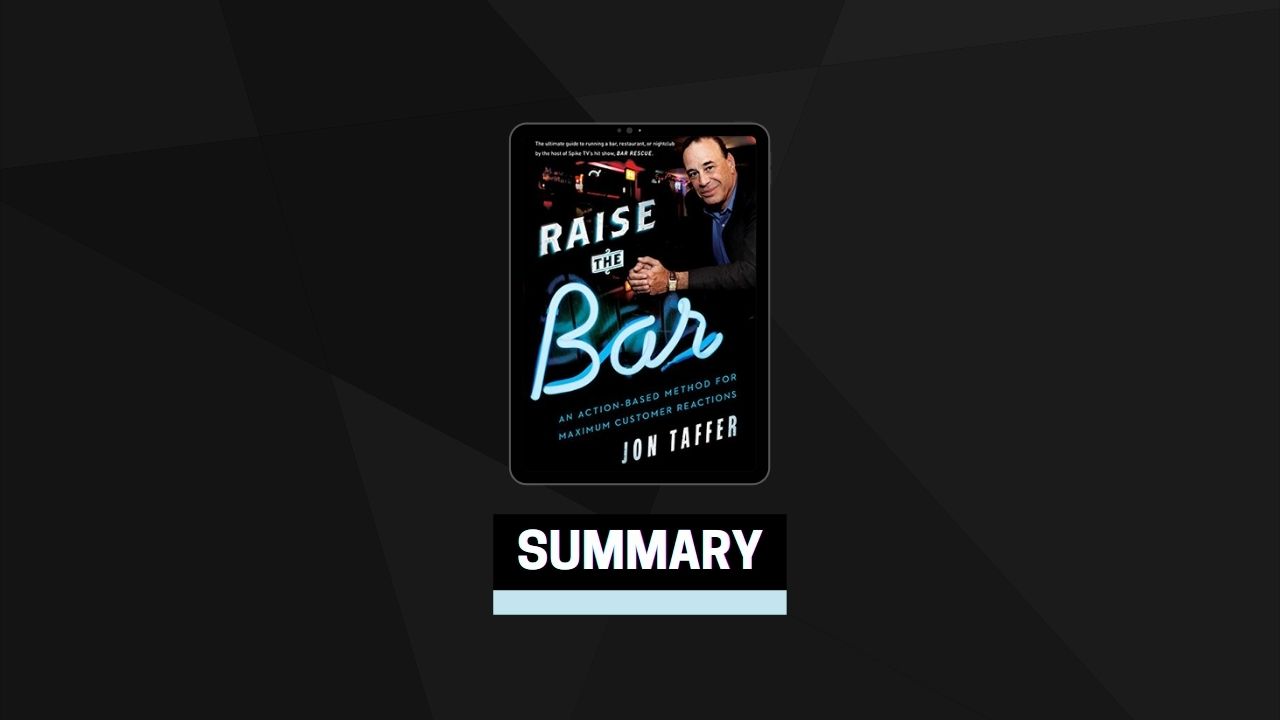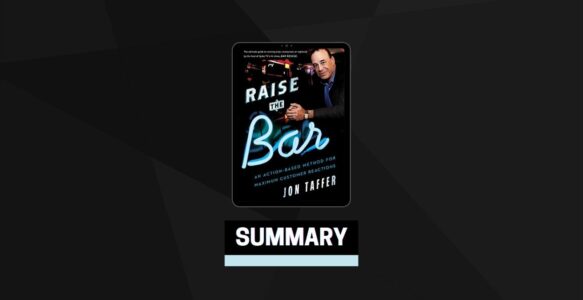You Sell One Thing: Reactions
The connection between reactions and revenue is often overlooked by hospitality and management schools. There are five “musts” every business professor teaches: an establishment must be convenient, be clean, offer quality service, offer a great value, and be safe. That’s all true, but these “musts” are a beginning, not an end point. Achieving them are where customer reactions come in.
Successful reactions are not about logic; they’re about emotions. When you hit a customer’s emotions, you reach the Promised Land. That’s what this book is about—sound business management may be straightforward and logical, but connecting with people isn’t. Don’t let the logistics overtake the human touch in your business.
Brand Them, Not You
It’s not enough to simply “love what you do” and think you can find success by flying by the seat of your pants.
I can’t tell you how many failed bar and restaurant owners I’ve met who thought that enjoying bars or being a “foodie” qualified them to run a successful establishment. They create places as monuments to themselves, with never a thought to the customer. It makes me laugh when the same people talk about “branding” as if a brand based on an interior monologue will automatically elicit a positive response from customers. Your “brand” is what your customers think of you, not what you think of you.
When an inevitable obstacle or problem appears—personal or professional—these are the owners who tune out or blame the customer, the economy, the bad location, or just about anything but themselves. It doesn’t take long for them to come to hate the sight of a martini glass or a pile or potatoes.
You Can Be a Master Manipulator
Anyone can learn how to manipulate reactions in others for mutual benefit, mainly because there is a sameness to manipulation. It is predictable, once you understand the basic ways people respond to a stimulus. Here’s an experiment: Shake your head yes while someone is talking to you and see if they start shaking their head with you. If they do, you’ve just manipulated them into agreeing with you.
Let’s say you go to a restaurant and there is something wrong with the food. If the manager deals with it in a lackluster way, there’s a good chance you will never return to the place. But if he comes over to you with sincerity and expresses how awful he feels about what happened, you will sense his desire to build a relationship with you. If he is really good, he’ll say, “I want you to come back next week, and I want to sit down with you afterward to see what you think.” Better yet, he’ll hand you a coupon for a free meal or a round of drinks. This person has just taken a negative situation and pulled you back from it. That’s what winners do.
The Bucket List
Most people fall into one of four personality/motivational buckets: money, pride, ego, and fear. With a little practice, you’ll be able to put people in the appropriate buckets and then play off their motivators for optimal Reaction Management. If you handle conversations correctly, most people will walk you into the right personality bucket on their own. It’s not such a big deal; eventually it doesn’t even take that much thought.
“Really” and “and” are the two most important words in drawing out what’s important to a person. It’s tough to balance listening and responding, but take time to master it by learning to listen. You have to start somewhere, so you might say, “Did you see that Yankee game the other night?” How he responds cues your next question. If he says, “Yeah, that was something,” you might say, “Do you play sports yourself?” If he says, “I used to play,” or “I coach my son’s Little League team,” start using “really” and “and” to get him to open up. Attune yourself to where he takes the conversation, particularly the topics, issues, or ideas that recur. Persistent themes are valuable information.
Someone who is motivated by money often talks about the size of his house or the brand of his car, or the fact that he’s been working since he was sixteen. He may also talk about his work history or accomplishments in terms of economics. The ego-driven person is often conscious of status and will talk about his life in terms of symbols of success. He will talk about promotions earned or awards won. However, the person in the fear bucket may cross his arms when
describing certain jobs; this immediately tells
he’s resistant and perhaps uncomfortable with risk and the unknown. He may avoid discussing certain subjects or practice denial
Money Is in Reactions, Not Transactions
Consumers are more sensitive to the quality of transactions they have because they’re simply more educated and aware of what quality service can and should be. Americans regularly tour the globe and experience high levels of service delivered in other regions of the world, most notably in Asia, where the concept of quality service is actively practiced.
The best companies in every sector create customer relationships based on trust and high customer expectations. Nowadays, great personal service is, in itself, a standalone point of difference. Zappos, the online shoe and clothing retailer, works hard to make its customer transactions better than its competitors’. Luxury carmaker Lexus consistently outpaces other makers of high-end cars in terms of customer satisfaction. Southwest Airlines has built its business on customer service and direct human interaction. Call the company yourself and find out. Unlike many other airlines, it’s fairly easy to get right to a real person who speaks understandable English. The fewer barriers to making a human connection, the better.
To lift service out of its dark dungeon and bring about a Service Renaissance in America, companies must realize that service is a transaction. It can be a real point of distinction that doesn’t actually cost a lot of money. In effect, every company’s product is a vehicle to positive customer reactions. From this perspective, American Airlines would no longer sell seats, and Sprint would not sell telephone services. The seat on the plane and the reception on a phone are only delivery systems of an experience that the customer gets from the transactions. These transactions are, in fact, the “product” that causes future revenue growth.
The Secret of Hiring the Right People: Attitude over Experience
This is where “human resource professionals” get mad. Managers and owners too often hire people based on the wrong criteria, especially in the hospitality business. Pick any big hotel chain and look at its HR manual. It’s as thick as a telephone book because employment professionals get paid for producing legal documents. They justify their existence, while simultaneously trying to mitigate liability by focusing on the fallback hiring position of “experience necessary.” As far as helping pinpoint the right people to hire, these manuals are useless.
Experience is not a factor in creating great customer reactions.
You can teach well-selected employees the procedural skills necessary to make them successful. But you can’t change someone’s personal interaction skills… it will never happen.
Step One: Identify Your Employee Adjectives
When you think of your favorite employees in the past, what comes to mind? A procedural element such as an organized workstation, neat paperwork, or promptness? No. What makes an employee memorable is her attitude and smile, the way she takes the time to make sure a customer is happy, the extra mile she goes to ensure orders are fulfilled and problems are solved. Her intrinsic qualities—her energy, sense of humor, eagerness, and contributions to the team—are the qualities you remember.
Below is one generic example of a Job Candidate Profile.
BARTENDER
- Energetic
- Extroverted/Conversational
- Very Likable (first impression)
- Hospitable, demonstrates a Great Service Attitude
- Sports Loving
- Cooperative, Team Player
- Quality Orientated
- Attentive, Good Listening Skills
Step Two: Recruit through Proper Advertising
The next step is to develop print or online advertising copy that will attract the personalities you’ve just defined.
Employee adjectives incorporated into ad copy attracts candidates who naturally gravitate and respond positively to those adjectives and discourages those who don’t.
Step Three: Identify Winning Personalities
Use three C’s—Conversation, Conviction, and Curiosity—to find out candidate’s personality, demonstrate conviction about company and the job, and to gauge if his passion matches.
Show Curiosity about the other person using “and” and “really.”
For example: “Oh, you coach a traveling hockey team? Really?” or “Oh, in your free time you hit new restaurants? I love it… and?”
Step Four: Select Your Winners
Once the “auditions” are done, you have to decide which candidates best meet the criteria you’ve set for the job. The candidates who match up with at least six of the eight adjectives are hirable. Keep in mind that the most important function of your staff is to establish customer relationships and reflect the personality and profile of your business and brand.
Set Standards and Commit to Them
If a standard is not qualifiable (what you are supposed to do), quantifiable (when or how often you are supposed to do it), and verifiable (management can check to make sure it was done), it is not a standard. What are yours? And how are you communicating them? If employees don’t know what you want and expect, they aren’t going to deliver.
If standards are not being met, do not blame your employees or the economy. Blame management.
Manage and meet standards by example. Walk the walk. Be as dynamic as you want your employees to be. Show them that you can take out the trash and wipe off a table with the best of them.


